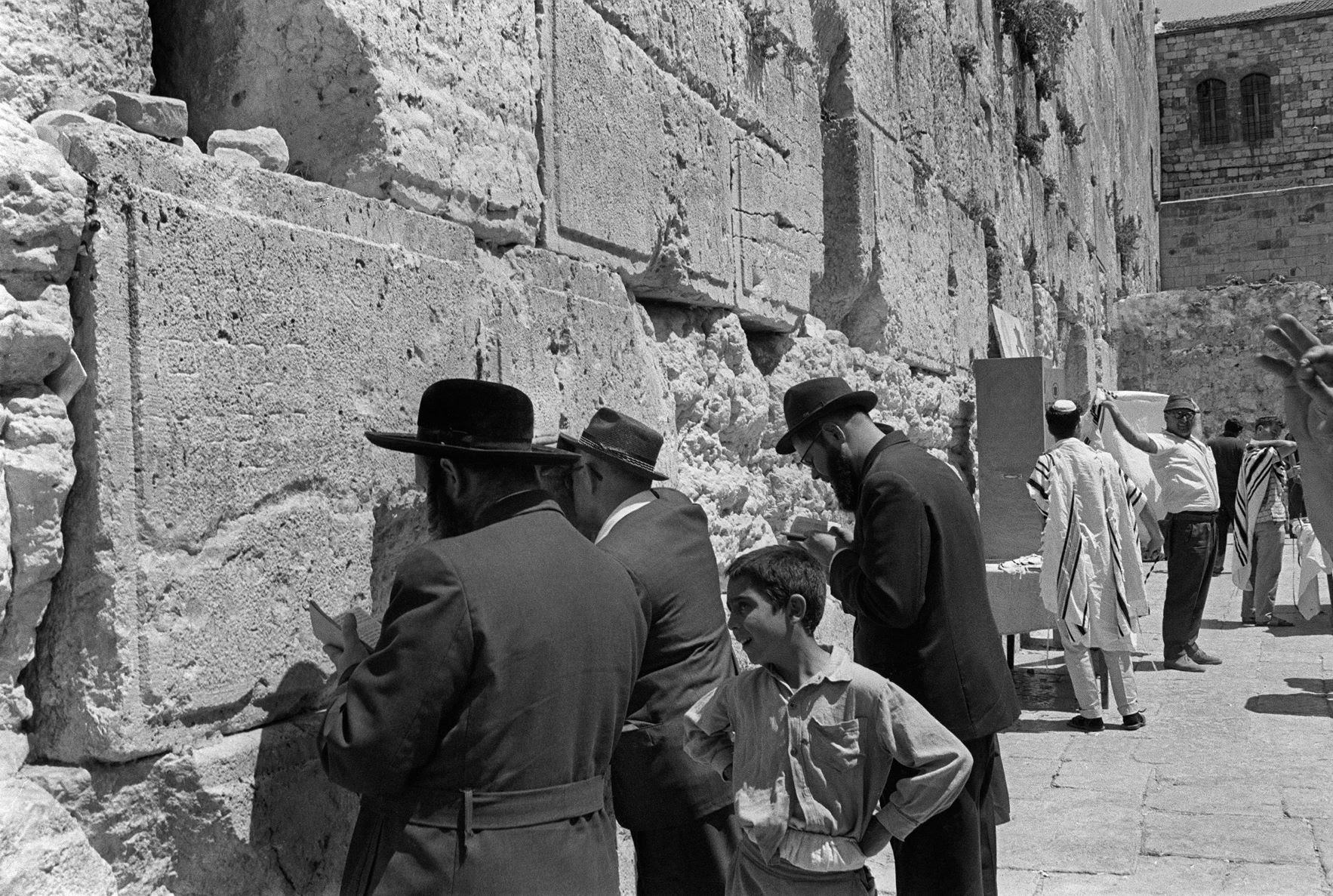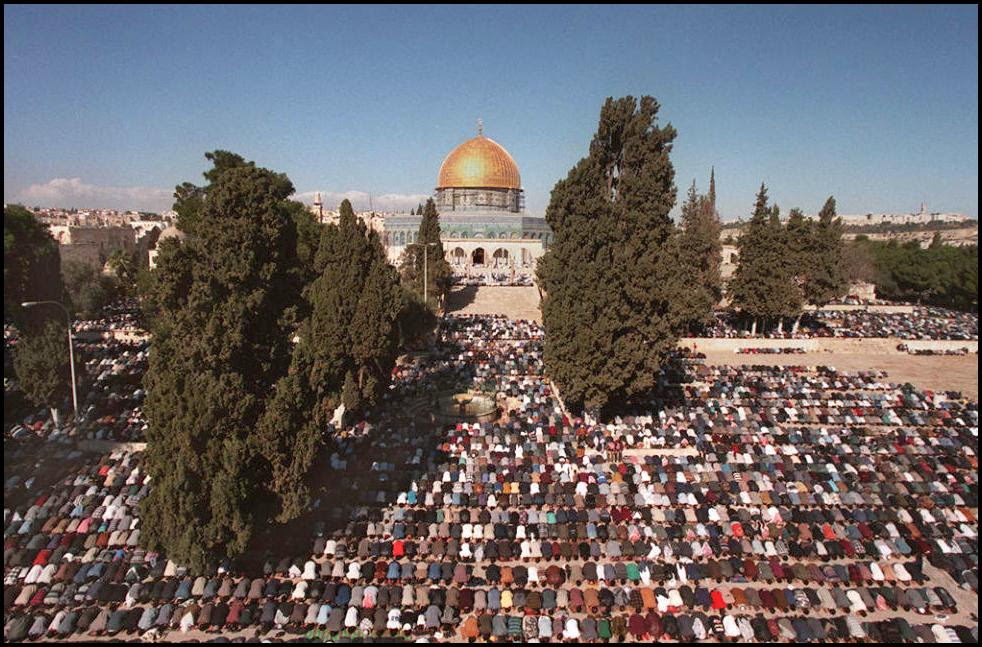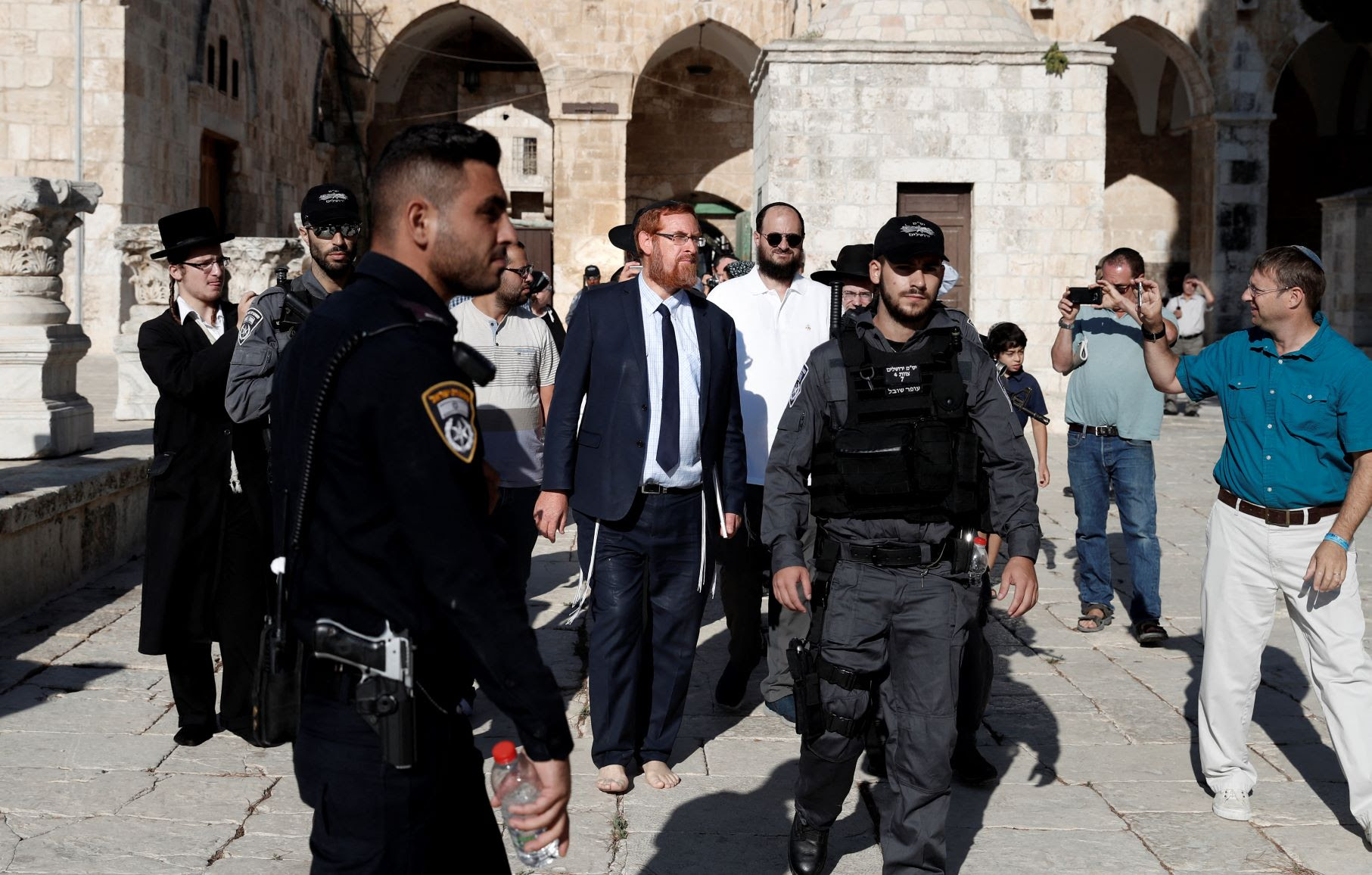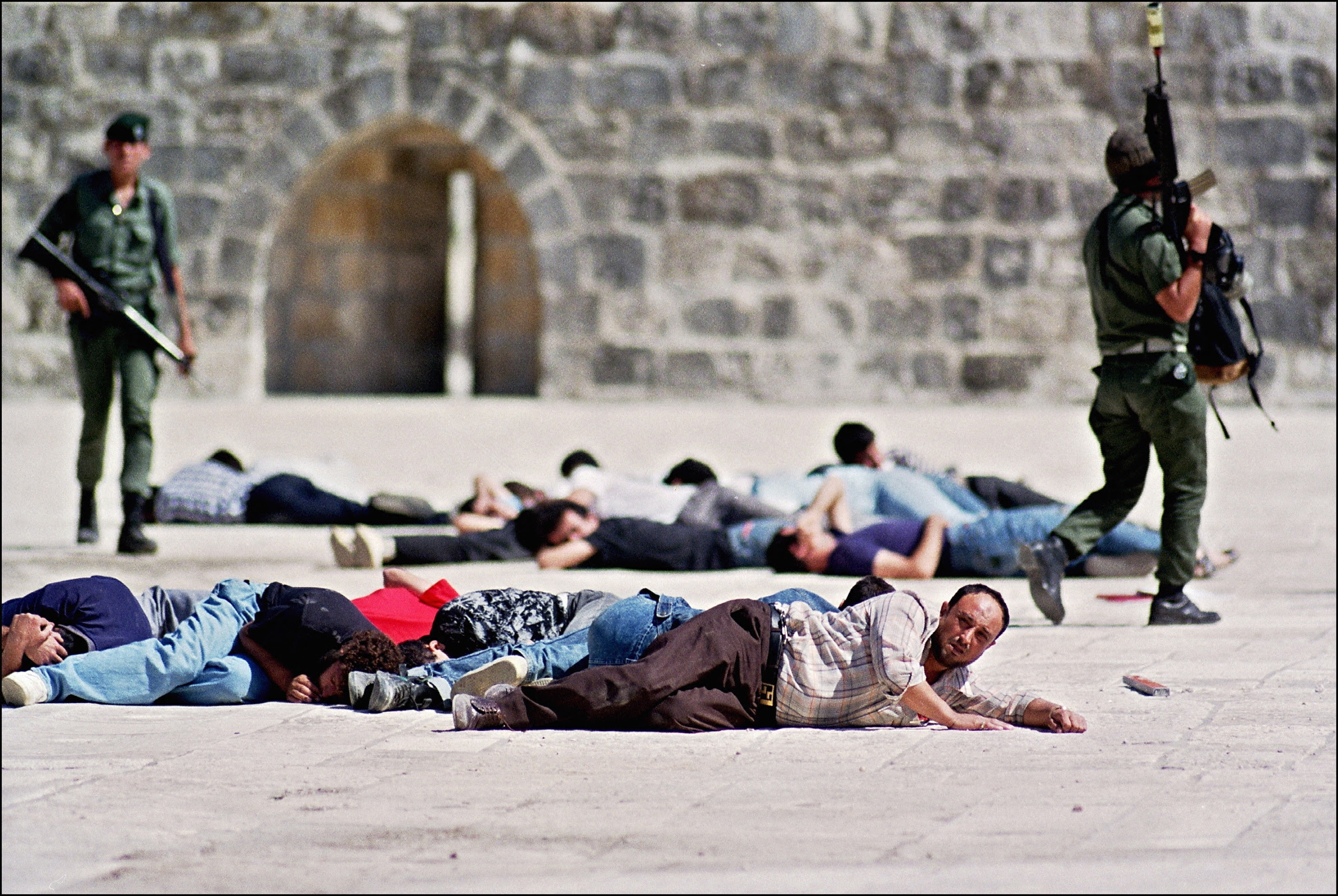Praying at the Jerusalem holy site is problematic for Muslims and many Jews. Here’s why
The Al-Aqsa Mosque complex, also known as al-Haram al-Sharif, lies on a raised plateau that Jews refer to as the Temple Mount.
Jewish prayer in the mosque’s courtyards has been banned for centuries, including by a succession of Israeli governments, and is highly controversial among Muslims and religious Jews alike.
Middle East Eye takes a look at why Jewish prayer at this holy site is so sensitive:
Why is the site important?
For religious Jews, the Temple Mount is the holiest site in Judaism. It is believed to be the site of two temples that were once the centre of the Jewish kingdoms that existed in ancient times, according to both scripture and archaeological studies.
Atop the hill is the vast Al-Aqsa Mosque, a complex of courtyards, prayer halls and shrines, including the golden-roofed Dome of the Rock. The mosque is one of the holiest sites in Islam.

Jews pray on 9 June 1967 at the Western Wall in Jerusalem after the Israeli conquest of East Jerusalem (AFP)
The Ottoman Empire captured Jerusalem in 1517 and would control the city for the next 400 years, before the British seized the city during World War One.
The Ottoman rulers were at pains to prevent sectarian clashes in the city – not just between Jews and Muslims, but also among various Christian sects claiming authority over the holy sites, and issued a number of edicts setting out how control of the city would be divided.
In 1757, Sultan Osman III issued a decree that established what became known as the “Status Quo”. Apart from attempting to prevent inter-communal fighting among Christians over sites like the Church of the Holy Sepulchre, the Status Quo also re-asserted a ban on non-Muslims entering Al-Aqsa and the right for Jews to use the Western Wall for prayer.
The Chief Rabbinate of Jerusalem has also, since 1921, officially banned Jews from entering the Temple Mount. The edict states that entry to the site is forbidden unless you are “ritually pure”, which is believed impossible under modern conditions.
According to the Rabbinate, the Temple Mount is the site of the Holy of Holies, the area on Earth where God’s presence appeared. Therefore, setting foot on the site risks desecration.
According to the Jerusalem Centre for Public Affairs: “In banning access to the Temple Mount, the chief rabbis were following Maimonides’ view that the Shechinah (Divine Presence) is still present at the spot of the Temple.
“Entry to it is forbidden and punishable with kareth (death by heavenly decree), given that Jews are in a state of ritual uncleanliness today in the absence of a red heifer, the ashes of which are required for the purifying process.”
The majority of Orthodox Jews have respected the Rabbinate’s ban and, though there have been numerous exceptions over the centuries, for the most part, Jewish prayer has been isolated to the Western Wall.
When did the current debate over Jewish worship begin?
In 1967, Israel seized the Old City of Jerusalem from Jordan, including the holy sites, and has occupied it ever since. The management of the Islamic sites was left in the hands of the Jordanian authorities.
Since then, there has been a growing movement calling for Jews to be allowed to pray on the Temple Mount.
Officially, Israeli authorities have maintained the Status Quo. Though the Zionist movement always had religious undertones, most Israeli leaders have been secular, if not outright atheist. As such, preventing an explosion of anger across the Muslim world has generally been a greater priority for political leaders than attempting to change the status of the Temple Mount.

Muslims pray at al-Aqsa Mosque in Jerusalem’s Old City on 10 January 1997 on the first day of the holy month of Ramadan (AFP)
Some religious Jewish groups have argued that, beyond even just allowing prayer on the Temple Mount, there is an imperative to build a Third Temple on the site, something which could herald the return of the Messiah and Judgement Day.
This view has long been a minority view among Jews in Israel and worldwide, but it has not always been so far from the mainstream.
One popular – but likely apocryphal – story came from General Uzi Narkiss, who led Israeli forces in capturing the Old City in 1967. He claimed that Shlomo Goren, then head of the military rabbinate and later chief rabbi of Israel, had urged him on the capture of the Old City to blow up Al-Aqsa Mosque.
Though Goren and others denied Narkiss’ account, he was a leading advocate of prayer on the Temple Mount and provoked controversy in August 1967 when he led a group of worshippers to pray on the site. His actions provoked an outcry from Muslims, secular Jews and the Chief Rabbinate of Jerusalem, which restated that it was forbidden for Jews to pray on the site.
Despite his earlier denials of a plan to destroy Al-Aqsa Mosque, he later reportedly said the failure to demolish the building had been a “tragedy” during an interview with Israeli radio.
Regardless of the restriction on Jews entering the mosque’s courtyards, for years Israeli settler groups have entered the complex accompanied by Israeli security services. Until recently they would usually be prevented from carrying out religious rituals (unless very discreetly) so as to prevent provoking Muslim worshippers.
Perhaps the most infamous provocative Israeli incident at Al-Aqsa came on 28 September 2000, when then-Israeli opposition leader Ariel Sharon entered the courtyard escorted by over 1,000 Israeli police officers and declared it would forever remain under Israel’s control.
The visit – which was allowed by the Israeli interior ministry and took place against a backdrop of peace negotiations – provoked a furious outcry from Palestinians, and eventually spiralled into the Second Intifada which resulted in the deaths of more than 3,000 Palestinians and more than 1,000 Israelis over a period of five years.
Who is advocating Jewish worship at Al-Aqsa now?
Several groups now exist advocating Jewish prayer on the Temple Mount, as well as the construction of the Third Temple, such as Temple Mount Faithful, the Temple Institute, Yaraeh and others.
Jewish Power, a key party in Benjamin Netanyahu’s government led by his national security minister Itamar Ben Gvir, are the ideological inheritors of Meir Kahane, an American-Israeli rabbi who advocated the transformation of Israel into a theocracy that denied citizenship to non-Jews.
With regards to the Temple Mount, Ben-Gvir and other Kahanists regard it as the primary holy site for Jews, and some have called for the demolition of Al-Aqsa Mosque and the building of the Third Temple.
As a longtime Kahanist, Ben-Gvir has a long history of inflammatory activities related to Al-Aqsa, as well as working as a lawyer defending others involved in Temple Mount activism.
He has said that in government he will push for Netanyahu to establish “equal rights for Jews” on the site, although Likud sources have reportedly rebuffed this.
Before making a highly provocative visit to Al-Aqsa on 3 January, Ben-Gvir described the situation at the mosque as “apartheid”, perhaps intentionally echoing the term used by Palestinians to describe the treatment of their civil rights in the country.
“I will go up to the Temple Mount. I will fight against racism, that a Jew cannot take a drink of water on the Temple Mount because he is impure,” he said, speaking to reporters at his party’s weekly faction meeting in the Knesset. “This is racism, this is apartheid.”
Another one of the most prominent and vocal advocates of allowing Jews to pray in the complex is Yehuda Glick, a US-born religious Zionist, who was an MP with the Likud party between 2016 and 2019.
A former executive director of the Temple Institute – a state-funded organisation that advocates the construction of the Third Temple – Glick has perhaps more than anyone else attempted to portray Jewish prayer on the site as a question of religious freedom.

Far-right Israeli rabbi and Israeli parliament member Yehuda Glick (C) walks barefoot, escorted by Israeli police and supporters, inside al-Aqsa Mosque in 2017 (AFP)
He is currently leader of HaLiba, a coalition of groups with the aim of “reaching complete and comprehensive freedom and civil rights for Jews on the Temple Mount”.
“The discrimination on the Temple Mount is obvious,” Glick told the Jewish Telegraphic Agency in 2016.
“The Temple Mount became a centre of incitement and hate instead of a centre of peace.”
Why do Palestinians object to Jewish worship?
Leaving aside the theological issues raised by Jewish and Muslim scholars, the issue is also one of power imbalance.
Although Israel annexed East Jerusalem soon after it was captured, the move was never recognised by the international community, and officially the city’s eastern neighbourhoods, including the Old City, remain under military occupation.
Palestinian residents of East Jerusalem are legally stateless. Though their family may have lived in the east of the city for generations, Palestinian residents need to apply for “permanent residency” there, leaving them without legal rights as citizens, including voting rights, and are represented neither by the Israeli state or the Palestinian Authority. They are, however, entitled to Israeli citizenship, but the vast majority refuse on political grounds.

Israeli policemen stand over arrested Palestinians following protests at Al-Aqsa Mosque in Jerusalem’s Old City, on 8 October 1990 (AFP)
Despite residency permits being nominally “permanent”, thousands of Palestinians have had their residencies revoked since 1967, while hundreds of housing units have been demolished due to not being approved by municipal authorities.
At the same time, the number of Israeli settlers in East Jerusalem has continued to increase. Palestinians and rights groups have repeatedly warned that Israel has an overall goal to enact demographic change in Jerusalem, increasing the Israeli Jewish population at the expense of the Palestinian population.
At the centre of this is Al-Aqsa. As the most enduring symbol of the Islamic presence in Jerusalem but also of Palestinian national identity, attempts by ultranationalist Jewish religious groups to have an increased presence there is not simply a question of Jews having access to the holy site, but of Israeli settlers taking control of one of the central icons of Palestinian culture.
Glick and others say their right to access the Temple Mount is a question of religious freedom – but their ability to access the site is bolstered by soldiers from one of the world’s most advanced militaries, while Palestinian worshippers have little or no protection or rights.
What is the current situation?
According to Glick, he and his allies have been effectively given free rein to pray openly on the Temple Mount for some time now.
“Dozens of Jews now openly pray every day in a secluded part of the eastern flank of the site, and their Israeli police escorts no longer attempt to stop them,” reported the New York Times in 2021.
According to figures published by the Temple Mount group Beyadenu, a record 51,483 Jews visited the site in 2022.
Post Disclaimer
Disclaimer: Explained: Why Jewish worship at Al-Aqsa Mosque is controversial - Views expressed by writers in this section are their own and do not necessarily reflect Latheefarook.com point-of-view